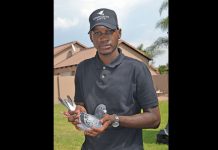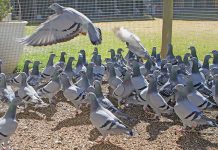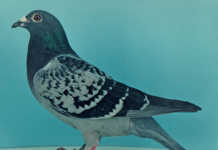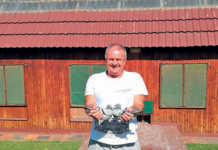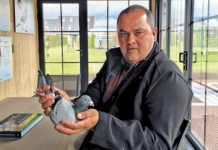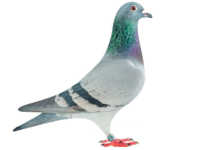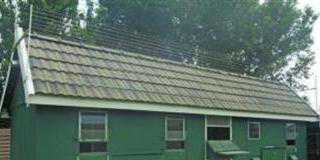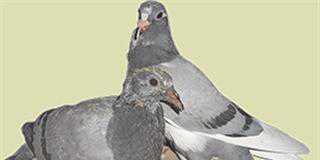If you live in a hot and humid area your pigeons are already heat training and more may not be a good idea. Heat causes fatigue, thirst and in extreme cases, death. It “burns” the feathers of most light-coloured birds into a ruffled fluff. The primary feathers of the wings of white-, red- and dun-coloured birds are often “burned” away until only the stubs remain. The bodies of birds overexposed to heat pack up as the internal organs simply shut down.
Heart and kidney failure are alarming signs. Rest procures a reasonable recovery provided there’s water nearby. If home is still far away, birds travel in shifts interrupted by regular visits to a farm dam, river or water fountain. When it hasn’t rained well yet, the air is depleted of moisture, increasing the negative impact of heat.
Middle- to long-distance race competitions are often signalled with high temperatures, as in South Africa they start around August and finish at the end of October. Distances vary between 580km and 800km for most local organisations. For Gauteng the final marathons are held from Leeuw Gamka (+/-900 km) and Matjiesfontein (+/-1 050 km). In fair weather the pigeons cover the distances on the day of liberation.
Travelling companions
Sometimes a lost racing pigeon hitch-hikes abroad a cargo ship or passenger boat. Daan Stander of Mosselbay received a pigeon back with a message on its leg that it received free board for a while on a passenger ship. Sometimes a pigeon in flight gives up braving the heat and takes temporary shelter on a roof, or becomes a barnyard/farmyard hippie with oil and dirt splashes on its neck and head, from pecking in the dog’s or cat’s food and bathing in dirty water.
Once such hitch-hikers are rested, they may return to the “road”, unless, as is better for them sometimes, they prefer to stay and start a family. I often receive e-mails from concerned citizens reporting a stray pigeon in their backyard, and wanting to know what feed to give it.
The ‘correct’ genotype.
Heat training for race preparation in hot conditions will only help your birds up to a point. We should own pigeons with the right genotype that can handle extreme temperatures. n Kuwait, extreme heat is part of daily life, with pigeon lofts erected near the border of the desert. During a heatwave or when extreme heat is expected, the organisers will reduce the distance of the race or cancel it altogether.
Countries like Taiwan are pigeon crazy, and often the birds are entered into races in any weather. Losses are high, but the birds that endure are big prize winners and sadly, all the fanciers often care for is the gold. the Vegas Classics in the US and the “money” races in Bangkok, more than 50% losses are not uncommon. One of the main reasons is that the pigeons entered aren’t genetically capable of doing the job. n Britain birds are flown over the English Channel and losses are high. Those that don’t make it end up in a watery grave as there’s nowhere to land.
The ‘correct’ phenotype
The eyes of racing pigeons are rather strong and can resist the rays of the sun for a considerable length of time. Most marathon winners have small pupils that don’t allow a lot of sunlight into inner chambers of the eye. The construction of the skull and the way the eyes are set in the head and eye sockets are very important. Bulging eyes will be exposed to heat and cold as well as wind and dust. The eyes need to be set a little deeper into the frame of the head and well-protected by the eye cere.
This is the fleshy ring on the outer edges of the eye socket, much like the eyebrows of human beings. Often the eye ceres of long distance birds are rather rough in texture, helping to route the dust and wind away from the eye. L ong distance birds mostly aren’t of bulky build. The primary flights of the wing should also be well-louvered to ease the upward stroke for the wind to pass during flight.
Heat training
Race events in the heat are unavoidable, as much as they have the Society for the Prevention of Cruelty to Animals (SPCA) knocking at our door. But it’s a sad excuse that we don’t force birds to remain airborne, because a pigeon in flight has one mission – to reach its home. f we gradually train them up in warmer conditions and prepare them properly, we may make a better impression on the SPCA. recommend, however, that race events in a heat wave are called off.
One can’t live indoors and then go on a bush safari without suffering severe sunburn. You can’t wear a teeny bikini and hope extra-large sunglasses will protect you from roasting. You have to be exposed to heat prior to that for many months, slowly. – Thomas Smit ([email protected] or call (011) 680 4778). |fw

